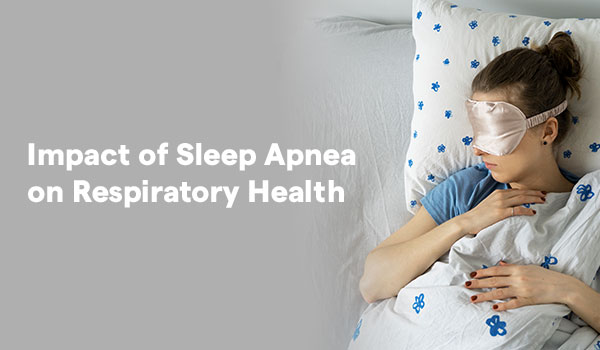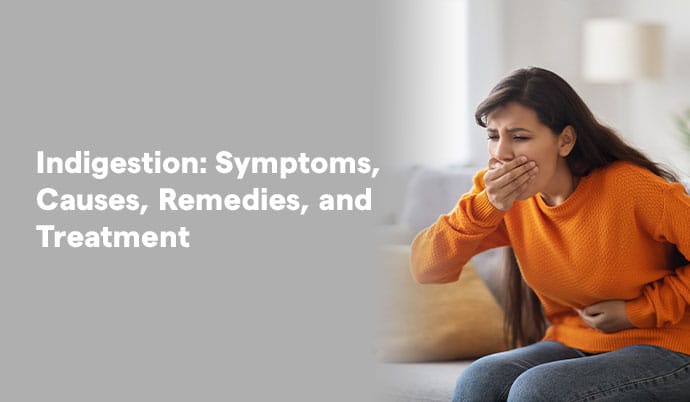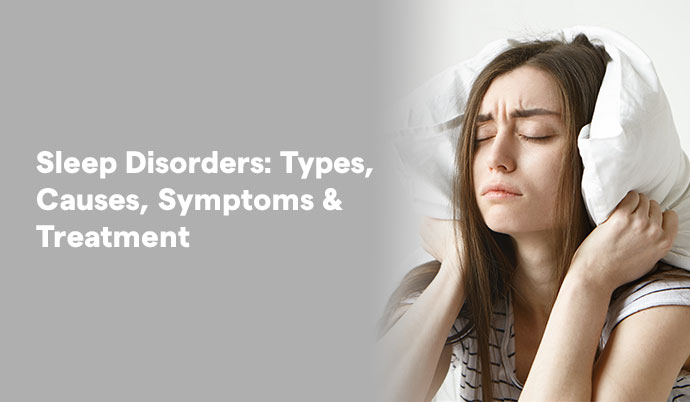
Recent studies clearly state that sleep apnea is one of the major causes of excessive daytime sleepiness, snoring is the cardinal symptom along with nocturia, acidity, daytime sleepiness, tiredness along with the poor quality of life. If not addressed properly, it can also have serious implications for respiratory well-being. To protect the body from any serious repercussions, the brain tries to protect it by waking up the individual just enough so that they can breathe properly. Therefore, it is necessary to evaluate the different impacts of sleep apnea on respiratory health and the significance of early diagnosis and intervention.
Sleep apnea is classified into three main types, the two types of sleep disorders are known specifically as:
Obstructive Sleep Apnea is the most prominent among them; it takes place when muscles at the back of the throat relax during sleep and hinder air passage. Central Sleep Apnea on the other hand results from an abnormality of the brain signals that control breathing. Both obstructive and central sleep apnea affect the breathing cycle and should not be overlooked because they have adverse effects on respiratory systems.
In the case of OSAS (Obstructive sleep apnea-hypopnea syndrome), the patient undergoes periods of hypoxia and hypercapnia during the episode of apnea. This can cause chronic respiratory acidosis in which the blood is too acidic due to the accumulation of CO2 leading to Type I Respiratory Failure and Type II Respiratory Failure. These changes occur over a period of time to disrupt the lung’s functionality in clearing carbon dioxide and performing the gas exchange of oxygen.
Sleep apnea has been understood to increase the free radical ions and this in turn may lead to increased chances of athroma formulation in the arteries with high levels of inflammation in the human body. Hence, it causes chronic inflammation, which can impact almost all systems of the human body, especially the respiratory system. Airway inflammation may lead to increased secretion of mucus, constriction of the airways and other structural changes collectively referred to as airway remodeling that potentially aggravates respiratory manifestations and decreases lung function.
It has been incurred by the specialists from the best chest medicine hospital in Delhi that people with sleep apnea are more prone to infections of the respiratory system, including pneumonia, bronchitis, and sinusitis which could lead to severe health repercussions. It is expected that these situations cause chronic hypoxia that suppresses the immune system, while the upper airway is altered in a way that makes it very hard for the body to clear mucus together with bacteria.
Pulmonary hypertension is a condition in which there is high blood pressure within the arteries of the lungs associated with sleep apnea. This can stem from back-to-back hypoxia and hypercapnia, an additional workload that is put on the heart during episodes of sleep to oxygenate the body. Over a period of time, pulmonary hypertension is capable of causing alterations in the pulmonary artery leading to the reduced ability of the lungs to accomplish gas exchange of oxygen and carbon dioxide hence an additional decline of respiratory health.
Recent studies and research have also revealed that individuals suffering from sleep apnea are more likely to contract cardiopulmonary diseases including coronary artery disease, and congestive heart failure, and it may aggravate Chronic Obstructive Pulmonary Disease (COPD). This increased risk can be attributed to sleep apnea cardio-respiratory risks, including hypertension information, and oxidative risk engagements. Untreated sleep apnea also increases the risk of death among such patients, especially in individuals with cardiopulmonary diseases.
Sleep apnea is an established hazard to respiratory health and therefore should be detected and managed as early as possible. It can easily be diagnosed and effectively treated. CPAP (Continuous Positive Airway Pressure) is a treatment of choice for sleep apnea, other options include the use of oral appliances and surgery when the condition is mild.
It is therefore clearly stated that when an individual is diagnosed and treated for sleep apnea, their sleep and wakefulness can be improved, even their respiratory status can be preserved and progression to serious cardiopulmonary disorders can be minimized. Some of the key health implications such as; type 2 diabetes, heart disease, stroke, and hypertension are a few of the consequences that can result from undiagnosed or untreated sleep apnea. Additionally, it can seriously damage cognitive abilities, leading to memory problems, concentration problems, and daytime fatigue, all of which might raise the risk of accidents.
Lifestyle changes, such as losing weight, though it can occur in lean and thin patients if their lower jaw is smaller or receding; exercising frequently, and abstaining from alcohol and sedatives right before bed, can help reduce the symptoms of sleep apnea. Some people may find relief with nasal decongestants or positional treatment. Since, treating sleep apnea not only increases the quality of life but also lowers the risk of long-term health issues and improves general well-being, awareness, and prompt intervention are essential. To learn more about the impact of sleep apnea on respiratory health book an appointment at Sir Ganga Ram Hospital, today.




